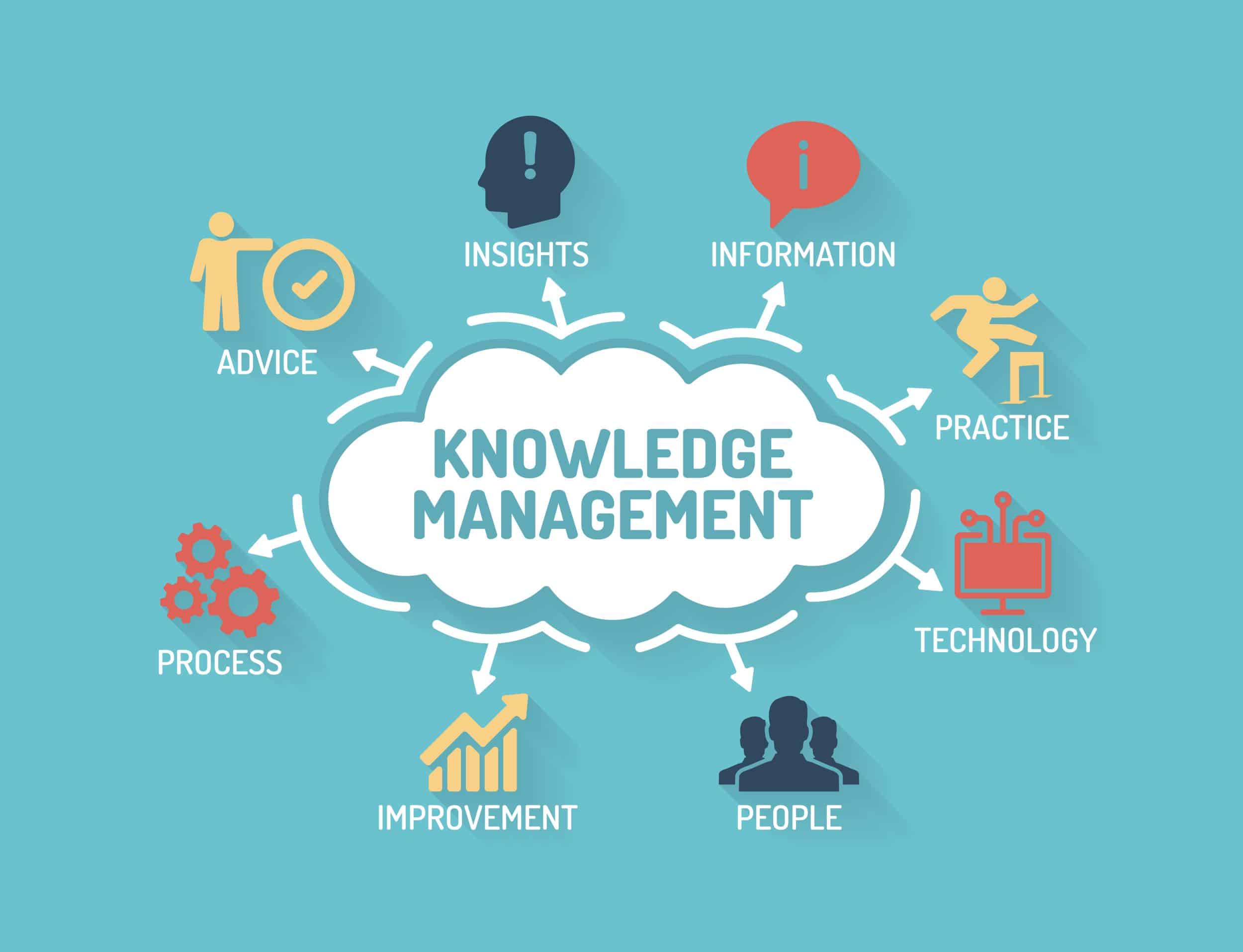Knowledge management refers to systematically administering an organization’s accumulated information. To effectively manage knowledge, data must be stored in a convenient location.
Businesses of all sizes and in all regions of the world engage in some form of knowledge management activities. These companies collect information comprehensively using various methods and tools to manage their knowledge.
After that, the information that was gathered was organised, stored, communicated, and analysed using the procedures that were established.
Information of this sort will be assessed in light of the available data, records, personnel, and skills.
After an accurate analysis, the information will be saved as the enterprise’s “knowledge”. Later on, activities such as the decision-making process at the organisation and the training of new staff members are examples of where this information is implemented and used.
Since its earliest days, the management of knowledge has been approached from a variety of angles. Most early methods consisted of manually storing data and performing analysis on that data. Since the advent of computers, most methods of managing information and a company’s operations have been automatic.
Consequently, storing, retrieving, and sharing information has become much more convenient. In today’s business world, virtually all companies have their in-house knowledge management framework.
The framework specifies the knowledge-collecting points, the techniques for gathering it, the tools used, the methods and equipment for storing the data, and the mechanism for analysing it.
Knowledge Management Process
The method of managing one’s organisation’s knowledge applies to any business. Depending on the circumstances, the tools and methods employed can be exclusive to the environment of the organisation in which they are used.
The process of knowledge management is broken down into six primary steps, each being assisted by a unique combination of tools and methods. When these procedures are carried out in the correct order, the information gathered can be construed as knowledge.
The six steps are:
Collecting
Managing knowledge begins with this step, which is the most crucial step. If you gather either irrelevant or incorrect information, the knowledge you gain as a result may be inaccurate. Consequently, choices based on such information run the risk of being flawed.
The process of collecting data uses a wide variety of approaches and instruments. To begin, the procedure of collecting data ought to be a part of the overall knowledge management process. The individuals participating in the data-gathering process must document these procedures and adhere to them properly.
The data gathering process defines specific data collection points. There is a possibility that certain points are a summary of various routine reports. As an illustration, the monthly sales and daily attendance reports might be great resources for collecting data.
In this step, not only are the points for collecting data and the mechanism for extracting that data defined, but also the storage for that data. For this purpose, the majority of organisations are now employing the use of a software database application.
Organizing
It is necessary to organise the data that was collected. This sort of organisation typically occurs under a set of predetermined guidelines. The organisation has come up with these guidelines on its own.
All employee information, for instance, could be kept in one place, and all sales information might be recorded in a single folder. This kind of organisation contributes to properly maintaining data contained in a database.
If the database contains a large amount of data, methods such as “normalisation” can be used to organise the data and cut down on the number of duplicates it contains.
In this manner, the data is organised logically and related to each other to make it easy to retrieve. The data are processed through step 2 and transformed into information.
Summarizing
In this process stage, the information is summarised to extract its core components. The extensive information is tabulated or graphically represented and filed in the appropriate location.
Regarding summarising, one can use various tools, including software packages and various methods.
Analyzing
The information is analysed to discover any relationships, redundant information, or patterns it may contain.
Because of the significant impact that experience can have, this task ought to be delegated to either a seasoned professional or a group of seasoned professionals. After analysing the data, reports are typically compiled as standard practice.
Synthesizing
Once this point is reached, information transforms into knowledge. The findings of the analysis, which are most often the information, are combined to produce various ideas and artefacts.
One entity’s pattern or behaviour can be used to explain another entity. The company will have amassed a body of knowledge that can be applied in many different contexts.
After that, this information is documented and filed in the organisation’s knowledge base for future reference.
In most cases, the knowledge base is a software application that is accessible via the Internet from anywhere in the world.
You can also obtain a free, open-source version of the exact knowledge base software or purchase comparable software to use as a knowledge base.
Decision Making
At this point, the information is used in the decision-making process. During estimating a particular kind of project or task, for instance, one can use the knowledge gained from estimating similar projects or tasks in the past.
This not only speeds up the process of estimation but also adds a high level of accuracy. Managing an organisation’s knowledge contributes to creating value and, in the end, results in cost savings.




